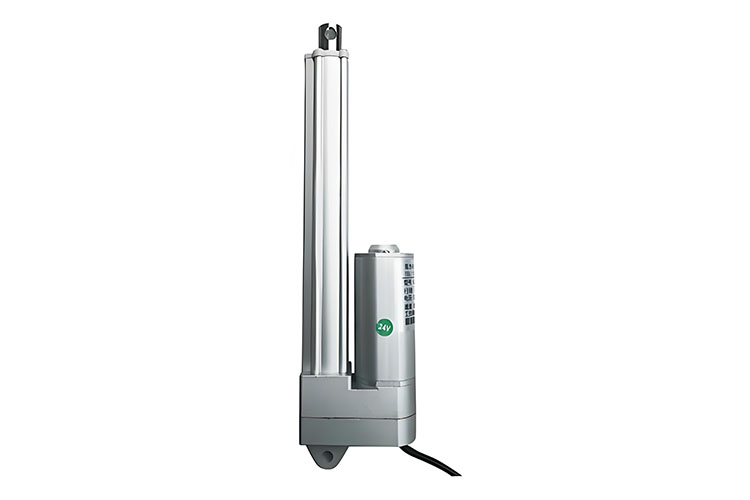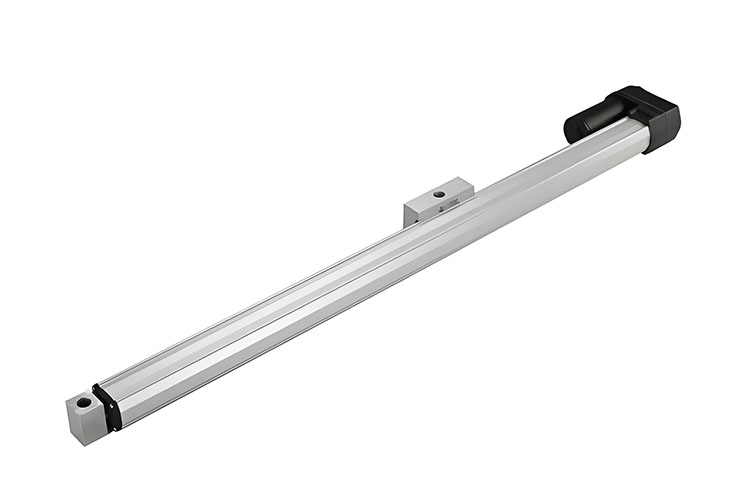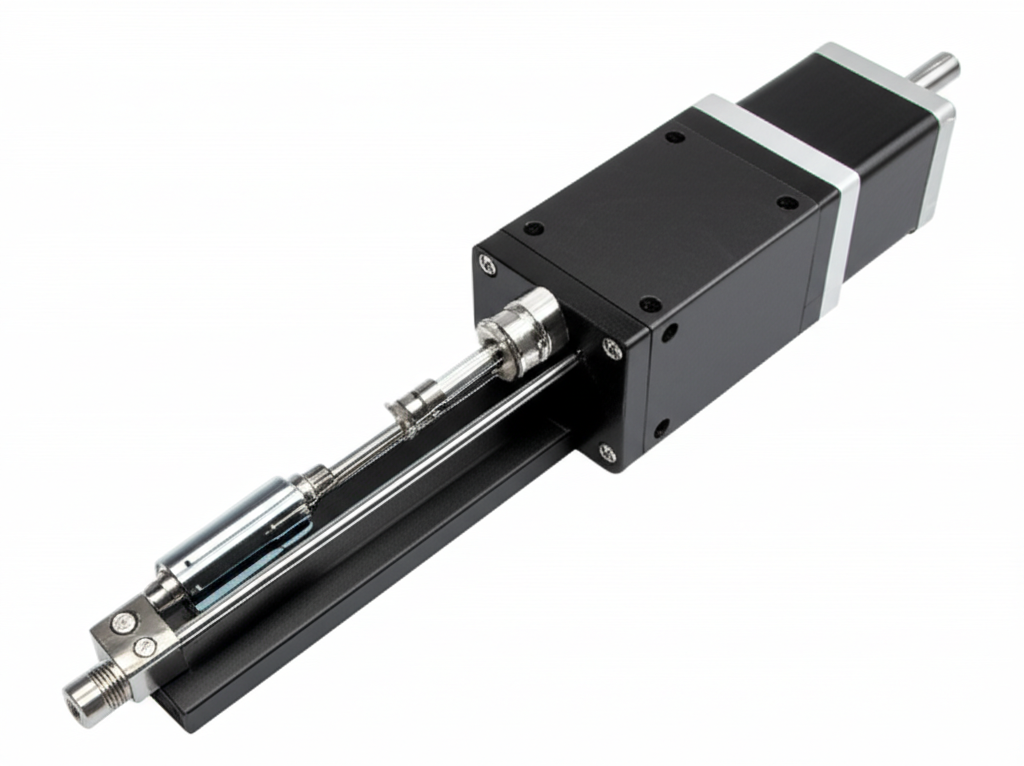Les objets bougent-ils alors qu'ils devraient rester immobiles ? Votre lit, votre bureau, votre ascenseur ou votre machine se déplace-t-il ou dérive-t-il lorsque vous arrêtez le moteur ? C'est la conduite à contre-courant ! De nombreuses personnes utilisent actionneurs linéaires tous les jours. Vous appuyez sur un bouton. L'actionneur se déplace. Il fait monter, descendre, sortir ou entrer des objets. Mais parfois, lorsqu'une force est exercée sur l'actionneur, celui-ci commence à reculer alors qu'il est censé rester immobile. Ce problème est appelé rétropédalage. Apprenez à l'arrêter, à rester en sécurité et à choisir le bon actionneur avec l'aide de Jimi Technology !
Pourquoi faut-il prévenir la conduite à reculons ?
Imaginez un lève-personne s'abaisse d'elle-même. Un grand panneau solaire changeant d'angle avec le vent. Un robot qui laisse tomber une pièce. Effrayant, n'est-ce pas ? De mauvaises choses se produisent :
- Risques pour la sécurité : Des personnes peuvent être blessées.
- Perte de position : Les choses se retrouvent au mauvais endroit.
- Dommages à l'équipement : Les pièces se cassent ou les moteurs grillent.
- Le gaspillage d'énergie : Les dérives consomment de l'énergie.
- Temps d'arrêt : Les machines s'arrêtent, le travail ralentit.
Vous avez besoin d'actionneurs qui tiennent leur place et de tout garder en sécurité. Chez Jimi, nous sommes des experts qui veillent à ce que vos machines restent en place, quoi qu'il arrive.
Qu'est-ce qui fait que le backdriving se produit ?
La conduite à l'envers se faufile pour de nombreuses raisons. Voici les principales :
- Vis à billes : Rapide, souple, mais facile à conduire en marche arrière.
- Vis à tête (Acme/trapézoïdale) : Plus lents, plus rugueux, souvent autobloquants.
- Engrenages à vis sans fin : La plupart sont autobloquants. La charge reste à sa place.
- Type et rapport de la boîte de vitesses : Certains tiennent bon, d'autres se laissent aller.
- Charge externe : Les poids lourds peuvent dépasser la force de maintien de l'actionneur.
- Vibrations ou chocs : Les chocs soudains peuvent rompre la friction statique.
- Lubrification et usure : La graisse et l'âge peuvent faire glisser les pièces.
- Couple de maintien du moteur : Certains moteurs ne restent pas immobiles lorsque l'alimentation est coupée.
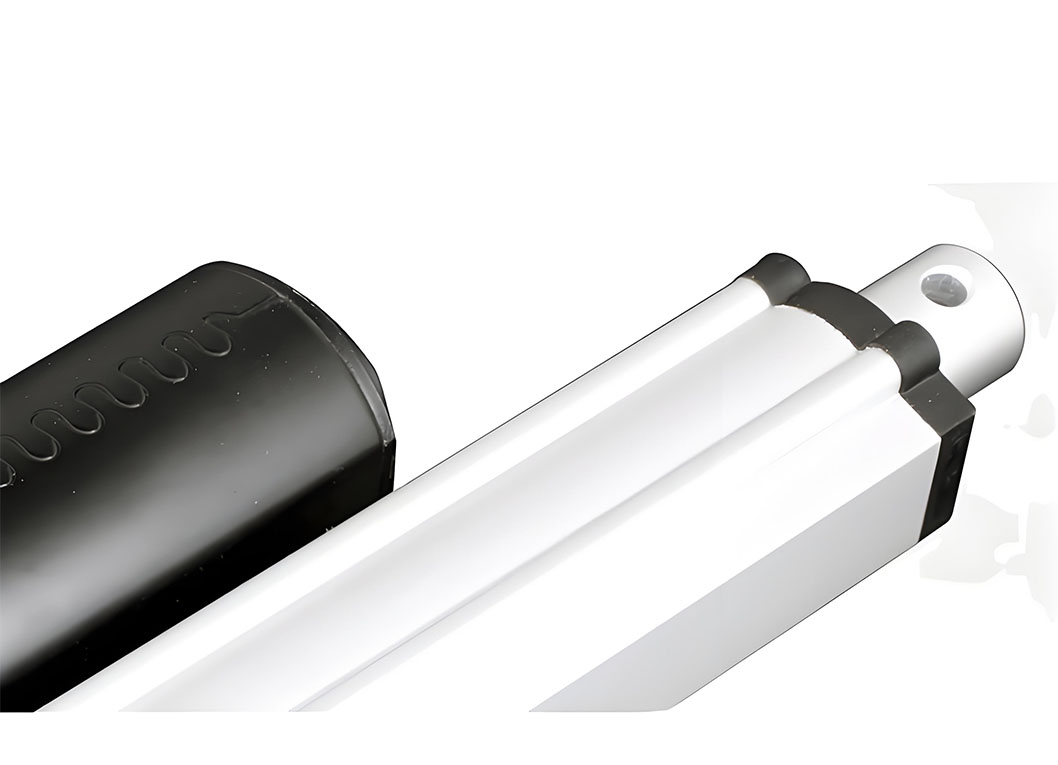
Comment fonctionnent les actionneurs linéaires ?
C'est simple. Vous appuyez sur un bouton. Énergie électrique se tourne vers mouvement linéaire-Les objets se déplacent vers le haut, vers le bas, vers l'intérieur ou vers l'extérieur. Les actionneurs ont :
- Vis de plomb ou vis à billes pour passer de l'essorage au glissement.
- Boîtes de vitesses pour modifier la vitesse et la force.
- Freins et embrayages d'arrêter ou de retenir.
Mais si la force fait tourner la vis ou l'engrenage dans le mauvais sens, il y a rétropédalage.
Chez Jimi, notre équipe d'ingénieurs sait comment concevoir des actionneurs pour que vous n'ayez pas à vous en soucier.
Comparons : quel actionneur permet d'arrêter la marche arrière ?
| Type | Efficacité | Risque lié à Backdrive | Utiliser | Sécurité | Prix |
|---|---|---|---|---|---|
| Actionneur à vis à billes | 80-95% | Haut | CNC, machines rapides | Besoin d'un frein extérieur | Plus haut |
| Actionneur à vis sans fin | 20-60% | Faible | Meubles, ascenseurs | Peut s'autobloquer | Plus bas |
| Actionneur à vis sans fin | 30-80% | Très faible | Levage, suiveurs solaires | Autobloquant | Modéré |
| Actionneur avec frein | Dépendante | Faible | Levées et pressions des patients | Le plus élevé (sécurité intégrée) | Coût supplémentaire des freins |
Référence : Tests de performance de l'actionneur Jimi interne (2024)
Comment mettre fin à la conduite à contresens ?
Voici comment les experts de Jimi assurent la sécurité :
- Utiliser des mécanismes autobloquants
- Engrenages à vis sans fin : Les engrenages en forme de vis sont difficiles à inverser.
- Vis de plomb autobloquantes : Les filetages spéciaux ne permettent pas aux forces de tourner la vis.
- Ajouter des freins
- Freins à commande électrique : Ils se verrouillent en cas de coupure de courant pour des raisons de sécurité.
- Freinage dynamique : Le moteur ralentit rapidement et reste immobile.
- Freins externes : Pinces ou tampons supplémentaires pour un maintien solide.
- Utiliser des embrayages
- Embrayage à roue libre : Le mouvement ne peut se faire que dans un seul sens.
- Embrayage de verrouillage : S'enclenche pour l'arrêt complet.
- Serrures mécaniques
- Goupilles, pinces, cales : Faire en sorte que les choses restent ; utilisé pour la sauvegarde.
- Choisir le bon moteur
- Moteurs pas à pas : Bien tenir la position.
- Servomoteurs : Peut avoir des freins intégrés ou des codes pour rester en place.
- Ratios d'engrenage
- Rapports de vitesse élevés : Faire en sorte qu'il soit beaucoup plus difficile pour la force de revenir en arrière.
- Gestion de la charge
- Actionneur de taille adéquate : Choisissez un actionneur capable de supporter le poids - toujours !
Choisir un actionneur qui n'entraîne pas de recul
Lorsque vous choisissez un actionneur, pensez à :
- Type de charge : Vertical, incliné, lourd ou précis.
- Cycle d'utilisation : Combien de temps va-t-il fonctionner ? Restera-t-il souvent immobile ?
- L'environnement : Fait-il chaud, froid, humide ou poussiéreux ?
- Besoins en matière de sécurité : Médical, levage de personnes, robots, suiveurs solaires.
Lisez toujours les spécifications du fabricant ou, mieux encore, parlez-en aux experts de Jimi. Nous vous aiderons à choisir et même à adapter le produit à vos besoins.
Contactez notre usine directement pour obtenir l'aide d'un expert.
Lieux réels où il faut éviter de conduire à reculons
Vous vous demandez où cela est important ? Voici quelques exemples :
Équipement médical
- Lève-personnes
- Lits d'hôpitaux
- Tables chirurgicales
Systèmes de poursuite solaire
- Maintenir les panneaux face au soleil, même par grand vent
Automatisation industrielle
- Convoyeurs
- Machines à indexer
- Lignes d'assemblage
Machines lourdes
- Plates-formes de levage
- Matériel de chantier
Robotique et drones
- Armes
- Griffes
Découvrez nos actionneurs de suivi des panneaux solaires.
Comment tester un actionneur pour le rétropédalage ?
Les tests sont très importants !
- Test de charge : Mettez des poids importants dessus, voyez s'il glisse.
- Simuler une panne de courant : Éteignez le jus - est-ce qu'il bouge ?
- Stabilité à long terme : Vérifier après des milliers de cycles.
Les actionneurs Jimi sont testés selon des normes mondiales strictes. Nos laboratoires utilisent les essais de charge, de vibration, de température et de cycle. Nos produits passent haut la main !
Rencontrez Jimi : votre expert en actionneurs de confiance
für feuchte Orte. sûr, intelligent et fort. Nos produits transforment l'électricité en mouvement linéaire fiable en utilisant la meilleure technologie :
- Vis sans fin et vis sans fin autobloquantes
- Freins à commande électrique
- Boîtes de vitesses robustes
- Para lugares húmedos.
Nous vous aidons à chaque étape - sélection, conception, installation et maintenance.
Les clients apprécient notre une livraison rapide, une qualité fiable et une assistance experte.
Guide facile : Liste de contrôle pour la prévention du backdriving
Étape 1 : Connaissez votre charge - poids, position, inclinaison.
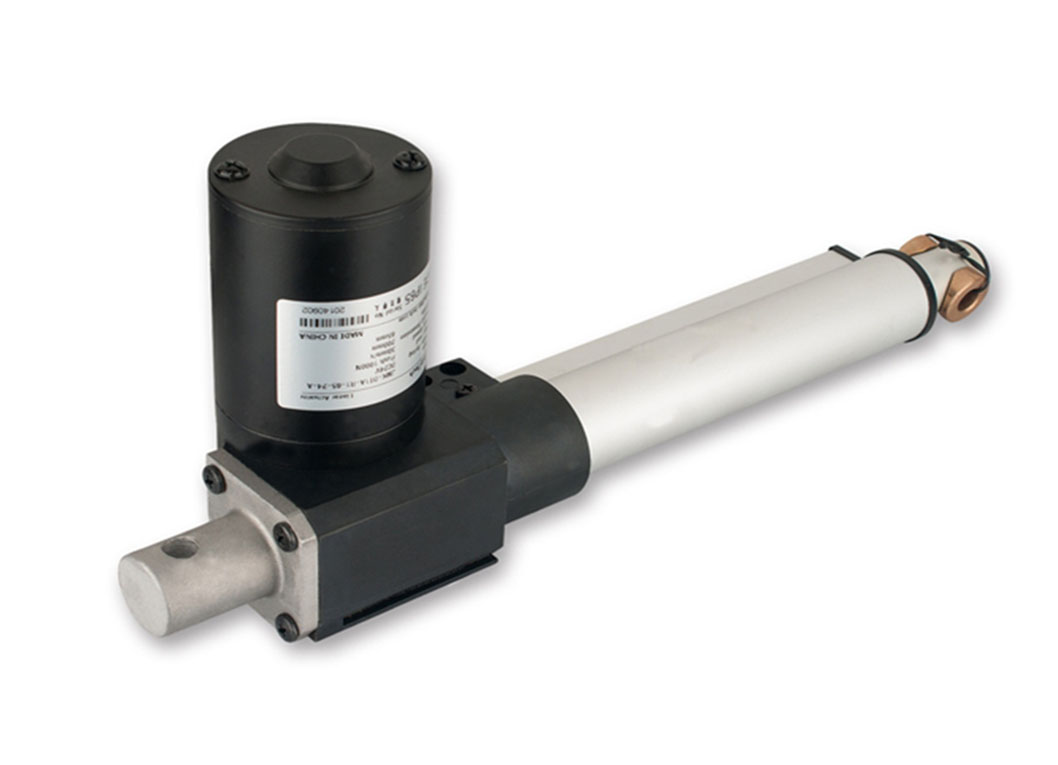
Étape 2 : Choisissez le bon actionneur - vis à billes pour la vitesse, vis sans fin pour le maintien.
Étape 3 : Ajoutez des freins ou des verrous pour plus de sécurité.
Étape 4 : Testez votre système - simulez une coupure de courant et une surcharge.
Étape 5 : Demandez à Jimi l'aide d'un expert ou une conception personnalisée.
Tableau : Quand faut-il s'inquiéter de la conduite à contresens ?
| Application | Niveau de risque | Conseil de solution Jimi |
|---|---|---|
| Lève-personnes, lits d'hôpitaux | Haut | Actionneur autobloquant + frein |
| Suivi solaire | Moyen | Actionneur à vis sans fin |
| Automatisation industrielle | Moyen | Actionneur à vis sans fin + contrôleur |
| Levage de chantier | Haut | Engrenage à vis sans fin avec embrayage et frein |
| Robots, manipulateurs | Moyen | Actionneur servo/pas à pas + retour d'information sur la position |
Référence : Études de cas de l'application Jimi (2023-2024)
Pourquoi choisir Jimi pour les actionneurs linéaires ?
Nous ne sommes pas un simple fournisseur de pièces détachées. Nous sommes l'autorité sur la sécurité et la performance des actionneurs. Voici ce qui nous distingue :
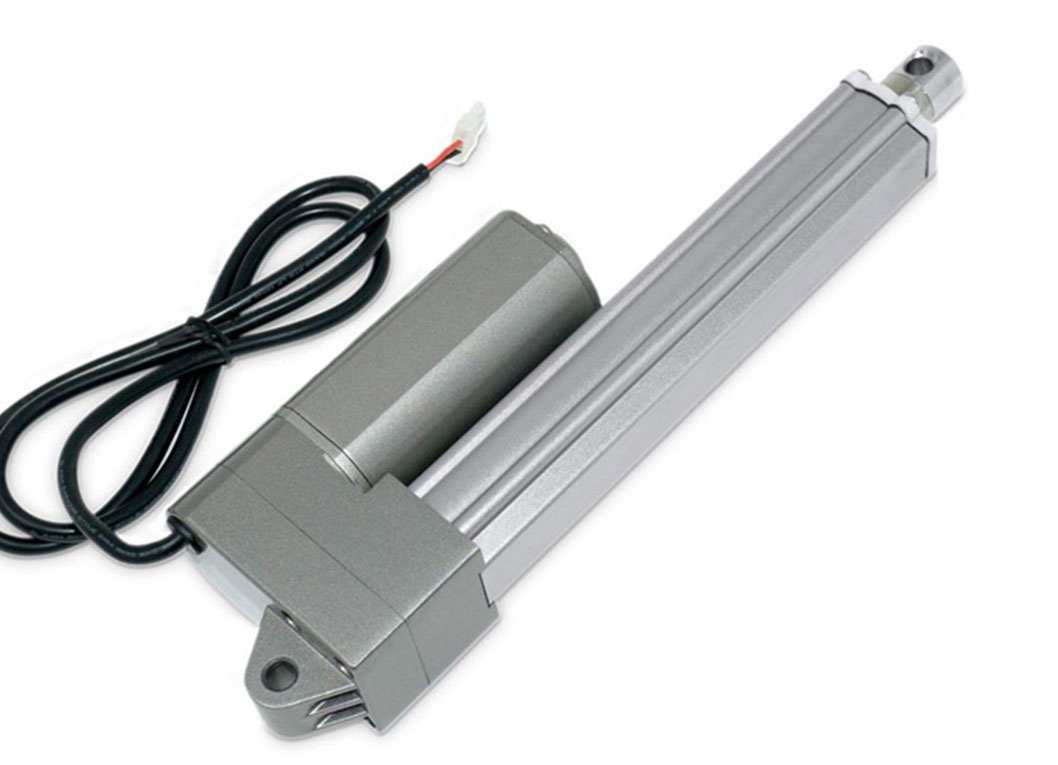
- Soutien d'un expert : Nous vous accompagnons du début à la fin.
- Meilleurs composants : Uniquement des modèles testés et éprouvés.
- Normes mondiales : ISO, CE, etc.
- Solutions personnalisées : Chaque projet bénéficie de l'actionneur idéal.
- Garantie et service complets.
Résolvons dès aujourd'hui vos problèmes d'entraînement à contre-courant des actionneurs !
Consultez notre catalogue de servomoteurs pour un contrôle et une force de maintien ultimes.
Références
- Jimi Technology Co. Rapports d'essais internes, 2023-2024.
- Usine chinoise de cylindres électriques
- Données sur les installations certifiées ISO 9001:2015
- Enquête sur la fiabilité des actionneurs de panneaux solaires, Jimi Tech, 2024.
- Normes de sécurité pour les dispositifs à mouvement linéaire, 2023.
Prêt pour un mouvement linéaire sûr et fiable ?
La conduite à reculons ne doit pas vous ralentir ni mettre qui que ce soit en danger. Avec l'aide de Jimi conception experte, force de fabrication et ingénierie sur mesureVos actionneurs résisteront à toutes les sollicitations ! Laissez-nous faire votre automatisation simple, sûr et intelligent.
Contactez-nous dès maintenant pour un devis gratuit ou pour parler à nos ingénieurs.
Jimi Technology Co. Ltd - Plus que des vendeurs. Nous sommes les experts, les fabricants, l'autorité. Votre actionneur est notre passion !
Découvrez d'autres solutions pour une automatisation sûre :



